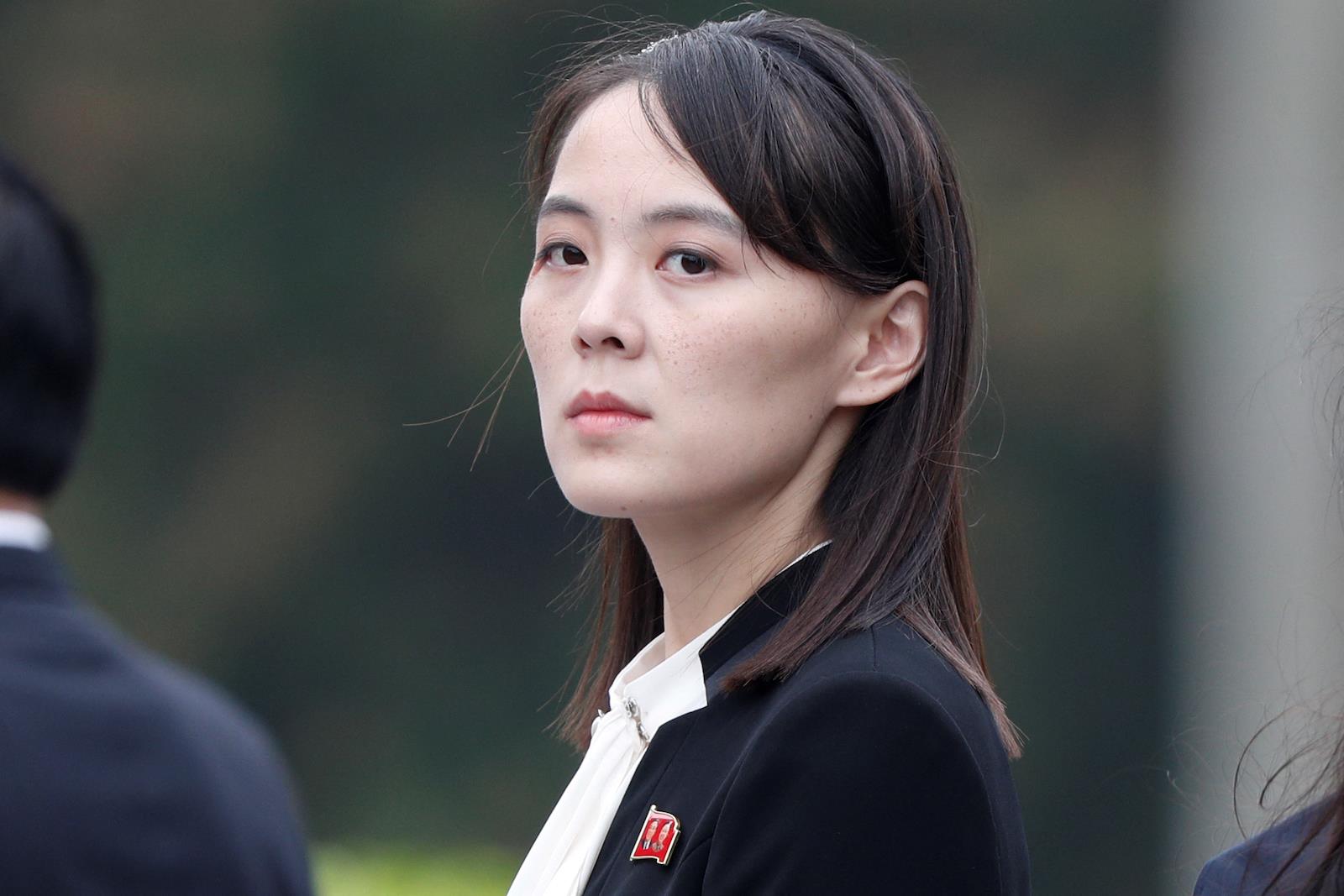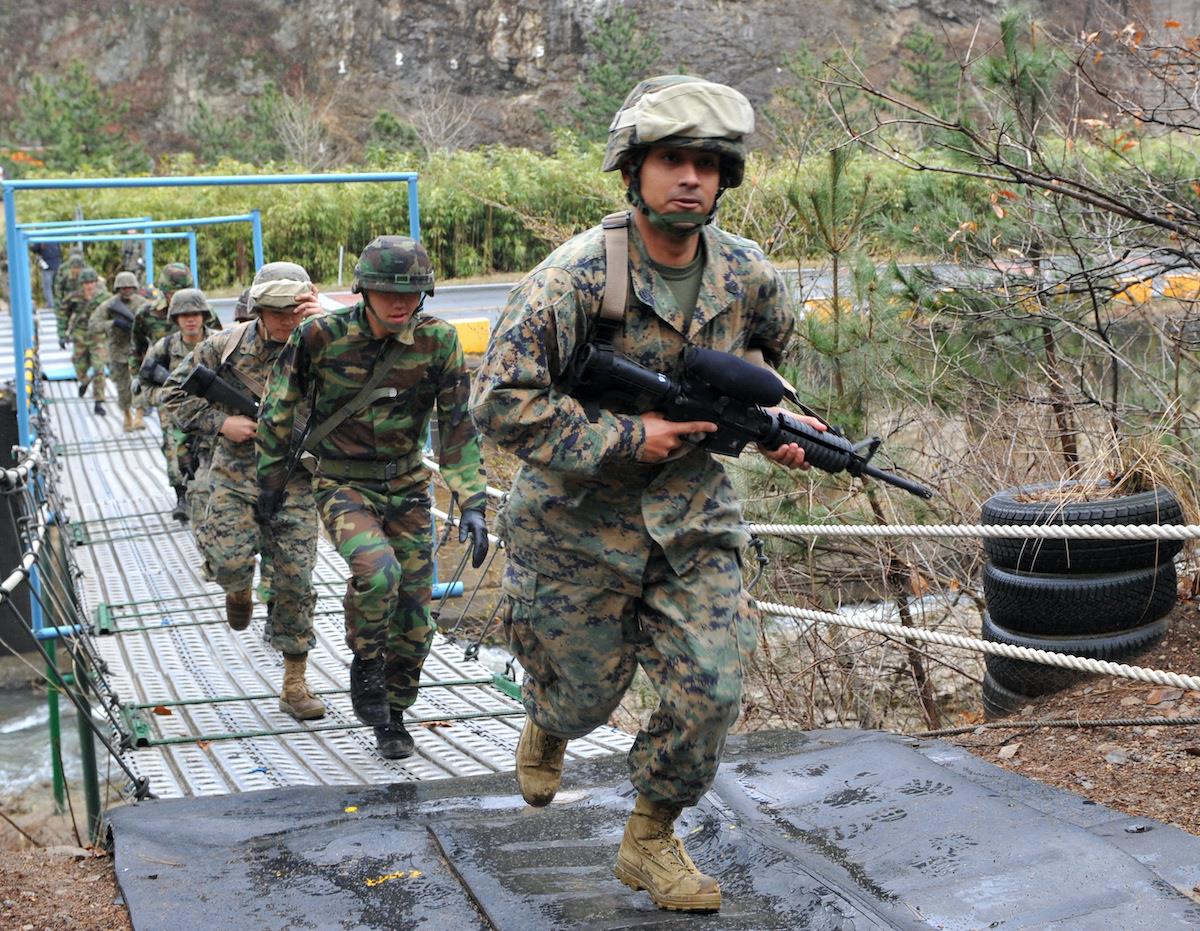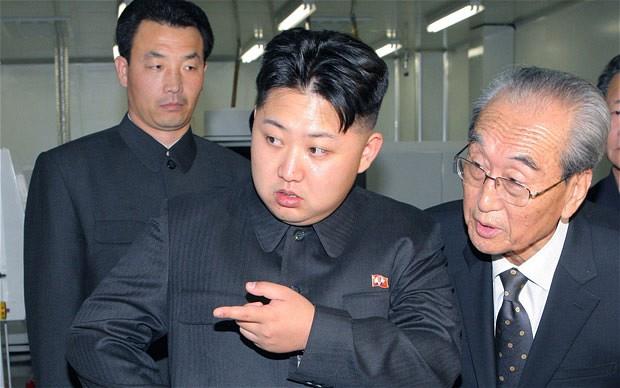(MENAFN- Asia Times) On a recent visit to the Joint Security Area in the Demilitarized Zone between North and South Korea, as joint US-South Korean military exercises were underway, I found no sign of tension.
Instead, there was an eerie quiet, marked by the almost complete absence of North Koreans. Even in the truce village where North Korean guards used to strut proudly, not a single North Korean could be seen.
On rare occasions, they emerge fully covered in hazmat suits, the norm since the Covid pandemic began, the United Nations Command told me. The sighting that day of three North Korean soldiers in the distance, crossing a field in the Joint Security Area, was a rarity.
The strange calm belied the wave of vitriolic North Korean propaganda that accompanied the restarting of large-scale joint military field exercises in March after a five-year hiatus. State-run North Korean media showed rallies of teens eager to sign up for the military, holding signs declaring“Death to America” and vowing to“slice them into pieces.”
A joint US, South Korean and Japanese naval drill on April 3 prompted a North Korean denunciation of“war maniacs” and a pledge to meet this“military provocation” with their own response.
A couple of days earlier, Kim Yo Jong, the sister of the North Korean dictator, issued a statement assailing a purported Ukrainian desire to deploy US nuclear weapons. It was widely interpreted as a barely veiled response to South Korean calls for shoring up deterrence with a return of US nuclear weapons.
Kim, who is often unleashed as an attack dog aimed at the South, dismissed“those stooges serving the US as their master and blindly believing in its poor promise,” and predicted that“they will drive the country and the nation into the abyss of ruin.”

Kim Yo Jong, the influential sister of North Korea's leader Kim Jong Un. Photo: Asia Times Files / AFP / Jorge Silva / Pool
This inflammatory rhetoric has accompanied the continued accelerated pace of the North Koreans' missile testing. In recent weeks, they have tested a Hwasong-17 intercontinental ballistic missile and a submarine-launched“strategic cruise missile” and have simulated tests of an underwater nuclear detonation device.
On March 28, state media showed leader Kim Jong Un inspecting a newly designated Hwasan-31 nuclear warhead capable of being fitted onto a range of shorter-range missiles that can target US and South Korean military bases.
Looking for evidence of North Korean intentions, some observers of North Korea point to a pair of articles that appeared on March 17 and March 28 in the official party daily Rodong Sinmun. They were credited to an unnamed“commentator,” an attribution often used to signal an authoritative view.
Both articles characterized the military exercises as“reckless military provocations” and linked them to a broader buildup in the region, including the recently announced Japanese increase in defense spending.
The commentators also took aim at the conservative South Korean government of Yoon Suk-yeol, who became president last year and has shifted policy away from the previous government's pursuit of engagement with the north to a tough, security-focused stance.
“The US and South Korean puppet traitors are becoming ever more bellicose and frantic in their attempt to invade” the North, the March 28 commentary said. It accused the US of preparing for a preemptive strike and touted its own nuclear forces' readiness to act in“self-defense.”

South Korean and US Marines train jointly. Photo: AFP / Kim Jae-Hwan
The North Korean regime has basically abandoned any hope of engaging the US, says former long-time US intelligence analyst Robert Carlin, who drew attention to these commentaries in an article on 38North, a web-based publication on Korea.
“Much as they probably don't like it,” he told this writer,“they have decided China – and China-plus-Russia – are the geopolitical basket they have to adjust to.” While Carlin doesn't see evidence that they are seeking conflict, he fears Pyongyang may be thinking of ways to“bait” the Yoon administration.
One goal may be to provoke the South Koreans to end the 2018 South-North agreement, reached by the previous progressive government, which established new demilitarized rules for the JSA, including a ban on carrying weapons.
“Then we would have increased chances of an incident blowing up,” Carlin worries. If forward NK units really have tactical nuclear weapons, the consequences of a dangerous accident are potentially dire.
US officials, however, see no evidence of movement toward a conventional military clash, along the lines of the ones that took place in 2010. At that time, the North Koreans sank a South Korean naval vessel and subsequently shelled a South Korean-controlled island in the waters west of the lines of control established by the 1953 armistice that ended fighting.
“The North Koreans are talking a lot, but they are not doing anything that moves toward conventional military confrontation,” a senior US government official stationed in Korea who closely follows the situation along the border told me.
There is no visible change in the posture of North Korean forces along the northern half of the Demilitarized Zone, and there are no changes in their deployment in the Yellow Sea to the west, he reports.
The incidents in 2010 were exceptional, the American official argues.

Young Kim Jong-un. Photo: Flickr / Zennie Abraham
They came at a time when Kim Jong Un, then a 27-year-old, was being groomed for succession by his father, Kim Jong Il. The younger Kim is believed to have orchestrated those attacks to build his credentials for leadership.“We are not in that situation now and we are not seeing anything that suggests a 2010-level event, from the Korean People's Army or otherwise,” the official says.
“It's hard to imagine the KPA running that kind of risk right now with so much US firepower in the area, with both the ROK (Republic of Korea) and US militaries better tuned and prepared than they have been for a long time, and with Yoon keen to show his intolerance of North Korean provocations,” observes former senior State Department official and long-time Korea hand Evans Revere.“Nevertheless, the North Koreans have surprised us before with their occasional stupidity.”
The recent commentaries and rhetoric are mainly aimed at the internal audience, the US official in Korea believes – to justify continued spending on missile and nuclear development at a time when the economy is undergoing severe contraction, including food shortages.
To the extent it is aimed at external audiences, it is an attempt to“shape the information space, to promote the narratives that the US and South Korea are the ones escalating tensions on the Korean peninsula.”
What is visible is a concerted effort by the Kim regime to demonstrate it has a credible nuclear deterrent, one that can survive an attack and retaliate, and flaunt its dismissal of denuclearization.“That is what I am seeing,” the senior Korea-based US official told me.
Rather than the anonymous commentators, he gives far greater importance to the statements attributed to Kim himself in a March 28 official report on his visit to the Nuclear Weapons Institute and the Missile General Bureau, where he was photographed inspecting rows of purported tactical nuclear warheads that could be interchangeably used on different missile systems.
Kim reportedly examined a plan and written orders for a drill simulating“a nuclear counterattack.” In the official account, he pronounced that North Korea's“powerful deterrence” was not aimed at“any state and specific group but [at] war and nuclear disaster themselves,” avoiding any language that targeted the US or South Korea.“This is not posturing for confrontation,” the official concludes.
Deterrence is part of the purpose, agrees David Albright, a former nuclear inspector who heads the respected Institute for Science and International Security.
But the credibility of that goal is undermined, Albright explained, by North Korea's actions –“calls for exponential growth in its nuclear arsenal, expansion of fissile material production, production of powerful nuclear weapons, interchangeable nuclear warheads and underwater drones tipped with nuclear weapons. It looks like North Korea is producing a nuclear arsenal that envisions – albeit it is crazy – warfighting,”
In any case, according to the senior Korea-based US official quoted earlier, the North Korean tests and the development of its nuclear warhead production capability have been steady, apparently not done with the idea of influencing negotiations.
Whatever Kim Jong Un's intent, the buildup of forces and the rise in rhetoric that suggests war is on the horizon create the danger of things spiraling out of control.
“There is no utility in conventional military confrontation,” said that US official, who closely monitors North Korea statements and active deployments.“I am more worried about an accidental incident that triggers an escalation cycle from which we can't break free.”
daniel sneider
is a lecturer on international policy and East Asian studies at Stanford University and a non-resident distinguished fellow at the Korea Economic Institute. Follow him on Twitter at
@dcsneider
This article was originally published by The Oriental Economist. It is republished with permission.
Like this:Like Loading...